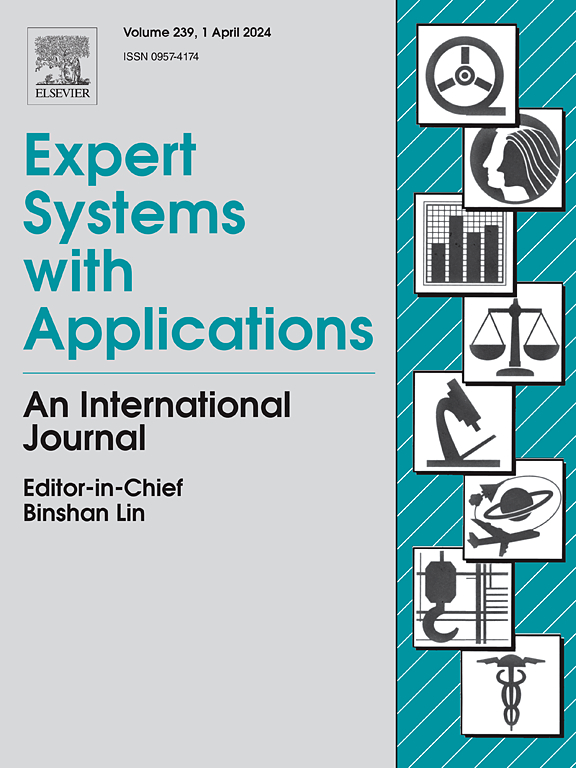Informer-FDR:基于交通环境的跟车情景下短期车速预测模型
IF 7.5
1区 计算机科学
Q1 COMPUTER SCIENCE, ARTIFICIAL INTELLIGENCE
引用次数: 0
摘要
驾驶员在城市道路上的跟车行为受到行人、骑车人、相邻车辆和路边停车等多种因素的影响。然而,很少有模型考虑到这些因素对驾驶员在跟车过程中速度选择的影响,从而限制了高级驾驶辅助系统(ADAS)的仿人驾驶能力。本文提出了一种考虑交通环境影响的跟车场景中的车速预测模型。车速预测采用 Informer-FDR(具有融合特征、扩张因果卷积和残差连接的 Informer),该模型在 Informer 模型的基础上采用了改进的编码器-解码器结构。通过融合交通环境特征和车辆动态参数,可以有效反映驾驶员与交通环境之间的动态交互特征以及潜在的交通冲突,从而增强模型对复杂驾驶环境的理解。此外,通过使用 ProbSparse 自关注机制降低了高计算复杂度,这将有助于解决将 Transformer 类模型应用于车载平台的困难。从自然驾驶数据(NDD)中提取了 3,980 个跟车案例,通过目标检测和测距算法获得了跟车场景中的车辆动力学参数和交通环境特征。采用组合特征选择法挖掘出最优特征集。引入扩张因果卷积层和平均池化层,以扩大模型的感受野,增强全局特征提取,并确保时序预测的因果性。此外,在编码器中加入了残差连接,实现了跨层信息的直接深度传递。测试集的验证结果表明,Informer-FDR 的 MAE(0.583)、MSE(2.942)、RMSE(1.715)最低,速度预测准确率(97.76%)、间距差距准确率(94.27%)、加速度准确率(95.35%)最高,在预测性能方面优于其他基线模型。烧蚀研究证实了改进的蒸馏层模块、残余连接模块和融合特征对提高预测性能的重要性。此外,道路类型实验揭示了模型在不同道路类型上的性能差异,强调了结合城市道路交通环境的重要性。本文章由计算机程序翻译,如有差异,请以英文原文为准。
Informer-FDR: A short-term vehicle speed prediction model in car-following scenario based on traffic environment
Drivers’ car-following behaviors on urban roads are influenced by various factors, including pedestrians, cyclists, adjacent vehicles, and roadside parking. However, few models consider these factors’ influence on drivers’ speed selections during car-following, limiting the human-like driving capability of advanced driver assistance systems (ADAS). This paper proposes a vehicle speed prediction model in car-following scenario that considers the influences of the traffic environment. The vehicle speed is predicted using Informer-FDR (Informer with fusion features, dilated causal convolution, and residual connection), which adopts an improved encoder-decoder structure based on the Informer model. Fusing features of traffic environment characteristics and vehicle dynamics parameters enables the dynamic interaction characteristics between drivers and the traffic environment and potential traffic conflicts to be effectively reflected, which enhances the model’s understanding of the complex driving environment. Moreover, the high computational complexity is reduced by using the ProbSparse self-attention mechanism, which will help to address the difficulty of applying Transformer class models to on-board platforms. Totally 3,980 car-following cases were extracted from naturalistic driving data (NDD), vehicle dynamics parameters and traffic environment characteristics in the car-following scenarios were obtained through target detection and ranging algorithm. The optimal feature set was mined using the combined feature selection method. The dilated causal convolution and average pooling layer are introduced to expand the receptive field of the model, enhance global feature extraction, and ensure the causality of temporal predictions. Furthermore, the residual connection was added to the encoder, realizing the direct deep transfer of cross-layer information. Verifications on the test set show that Informer-FDR has the lowest MAE (0.583), MSE (2.942), RMSE (1.715), and the highest speed prediction accuracy (97.76%), spacing gap accuracy (94.27%), acceleration accuracy (95.35%), which outperforms other baseline models in terms of prediction performance. The ablation study confirms the importance of the improved distilling layer module, residual connection module, and fusion features for predictive performance improvement. Additionally, the road-type experiment reveals performance differences of the model on different road types, emphasizing the importance of incorporating traffic environment on urban road.
求助全文
通过发布文献求助,成功后即可免费获取论文全文。
去求助
来源期刊

Expert Systems with Applications
工程技术-工程:电子与电气
CiteScore
13.80
自引率
10.60%
发文量
2045
审稿时长
8.7 months
期刊介绍:
Expert Systems With Applications is an international journal dedicated to the exchange of information on expert and intelligent systems used globally in industry, government, and universities. The journal emphasizes original papers covering the design, development, testing, implementation, and management of these systems, offering practical guidelines. It spans various sectors such as finance, engineering, marketing, law, project management, information management, medicine, and more. The journal also welcomes papers on multi-agent systems, knowledge management, neural networks, knowledge discovery, data mining, and other related areas, excluding applications to military/defense systems.
 求助内容:
求助内容: 应助结果提醒方式:
应助结果提醒方式:


